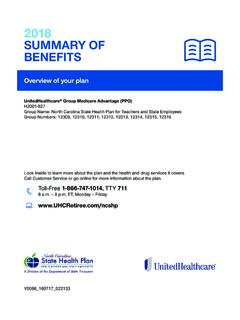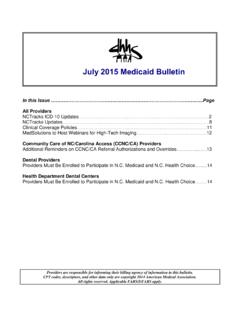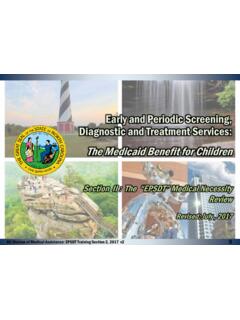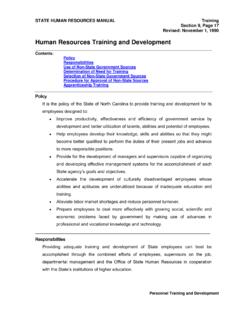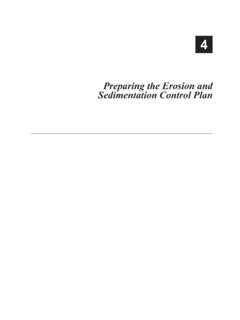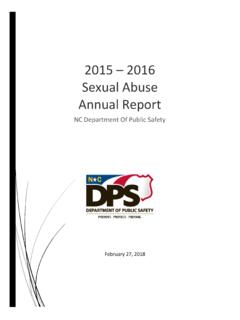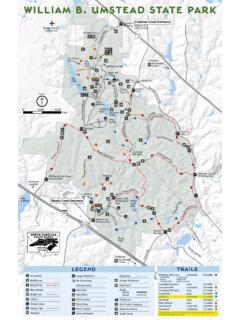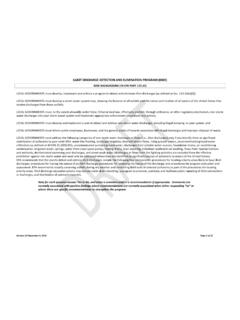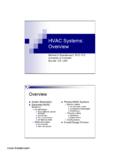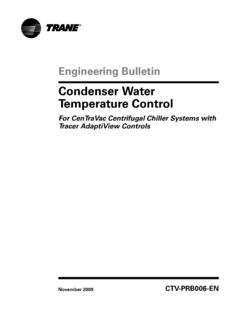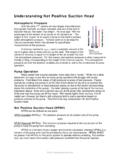Transcription of Energy Saving Fact Sheet Chillers
1 IntroductionIntroductionIntroductionIntr oduction Central building cooling options include water Chillers and direct-expansion (DX) A/C units. Chillers use a re-frigeration cycle to cool water to 42 F to 55 F for pumping to chilled water cooling coils. Air is then blown over the chilled water cooling coils to provide cool air to the conditioned space. DX systems also use a refrigera-tion cycle, but distribute refrigerant directly to DX cool-ing coils some are packaged in a single housing, oth-ers are split (evaporator coil remote to condenser and compressor).
2 High-efficiency Chillers can produce chilled water using less than kW per ton of cooling capac-ity. A refrigeration system must also reject the heat that it removes using a cooling tower for water cooling the condenser (most efficient) or using fans for air cooling the hot refrigerant of the condenser coil. Chiller Performance RatingsChiller Performance RatingsChiller Performance RatingsChiller Performance Ratings There are many chiller manufacturers of several com-pressor types and condenser cooling configurations. These manufacturers have websites that are very educa-tional to chiller operation in general and specific market-ing uniqueness of their equipment.
3 The important thing for chiller operation is to know how the unit is performing relative to optimum design efficiency after the initial in-stallation, where efficiency is dependent on chiller service duty and maintained equipment performance worthiness. The Air Air Air Air----Conditioning and Refrigeration Institute (ARI)Conditioning and Refrigeration Institute (ARI)Conditioning and Refrigeration Institute (ARI)Conditioning and Refrigeration Institute (ARI) certi-fies chiller performance both for capacity (tons) and power input according to very detailed procedure to ensure manufacturer s performance statements are verified through actual running under partial load and full load conditions.
4 As seen below there is a kw/ton range from a partial loaded condition to a full loaded condition that would be expected during installed operation. It is possible Chillers consume more than 50% of electrical Energy during seasonal periods of building use. More than 120,000 Chillers in the are expending more than 30% in additional Energy through opera-tional inefficiencies. (Estimated by DOE survey) water cooled condenser water (cooling tower) tempera-ture decrease of 1 F can increase efficiency of the chiller compressor by 1% to 2 % in most situations; however, there is a limit and optimum lower condenser temperature for a given partial loading of the chiller compressor.
5 A neglected or poorly maintained cooling tower can reduce chiller efficiency by 10% to 35% and a dirty coil condenser of an air cooled chiller as much as 5% to 15% Chemical cleaning of the inside of the condenser and evaporator heat transfer surfaces can result in a 5% to 10% Energy savings kw/ton Air-cooled Chillers are less efficient than water -cooled Chillers but cost less as well. Chiller Performance FactsChiller Performance FactsChiller Performance FactsChiller Performance Facts to determine, with today's chiller machines this instanta-neous input (kw)/(ton) output relationship.
6 Most have a control panel that looks at all of the motor drives con-nected kw for comparison with the evaporator chilled water flow and temperature. However, if this panel is not available, the following formula represents the readings that must be taken to approximate the kw/ton values for comparison with the previous ARI certification data. This will determine operating cost and efficiency and also represents a logged report. Efficiency Recommendations ARI Standard 550/590 Efficiency Recommendations ARI Standard 550/590 Efficiency Recommendations ARI Standard 550/590 Efficiency Recommendations ARI Standard 550/590 Air Cooled ChillersAir Cooled ChillersAir Cooled ChillersAir Cooled Chillers
7 Part Load Optimized Full Load OptimizedPart Load Optimized Full Load OptimizedPart Load Optimized Full Load OptimizedPart Load Optimized Full Load Optimized Compressor Type & Capacity Compressor Type & Capacity Compressor Type & Capacity Compressor Type & Capacity Recommended Best Available Recommended Best AvailableRecommended Best Available Recommended Best AvailableRecommended Best Available Recommended Best AvailableRecommended Best Available Recommended Best Available
8 IPLV (kw/ton) IPLV (kw/ton) Full Load (kw/ton) Full load (kw/ton) IPLV (kw/ton) IPLV (kw/ton) Full Load (kw/ton) Full load (kw/ton) IPLV (kw/ton) IPLV (kw/ton) Full Load (kw/ton) Full load (kw/ton) IPLV (kw/ton) IPLV (kw/ton) Full Load (kw/ton) Full load (kw/ton) Scroll (30 Scroll (30 Scroll (30 Scroll (30 60 tons) 60 tons) 60 tons) 60 tons)
9 Or or or or less or or or or less Reciprocating (30 Reciprocating (30 Reciprocating (30 Reciprocating (30 150 tons) 150 tons) 150 tons) 150 tons) or or or or lessssssss or or or or less Screw (70 Screw (70 Screw (70 Screw (70 200 tons)200 tons)200 tons)200 tons) or or or or less or or or or less water Cooled ChillersWater Cooled ChillersWater Cooled ChillersWater Cooled Chillers Part Load Optimized Full Load OptimPart Load Optimized
10 Full Load OptimPart Load Optimized Full Load OptimPart Load Optimized Full Load Optimizedizedizedized Compressor Type & Capacity Compressor Type & Capacity Compressor Type & Capacity Compressor Type & Capacity Recommended Best Available Recommended Best AvailableRecommended Best Available Recommended Best AvailableRecommended Best Available Recommended Best AvailableRecommended Best Available Recommended Best Available
